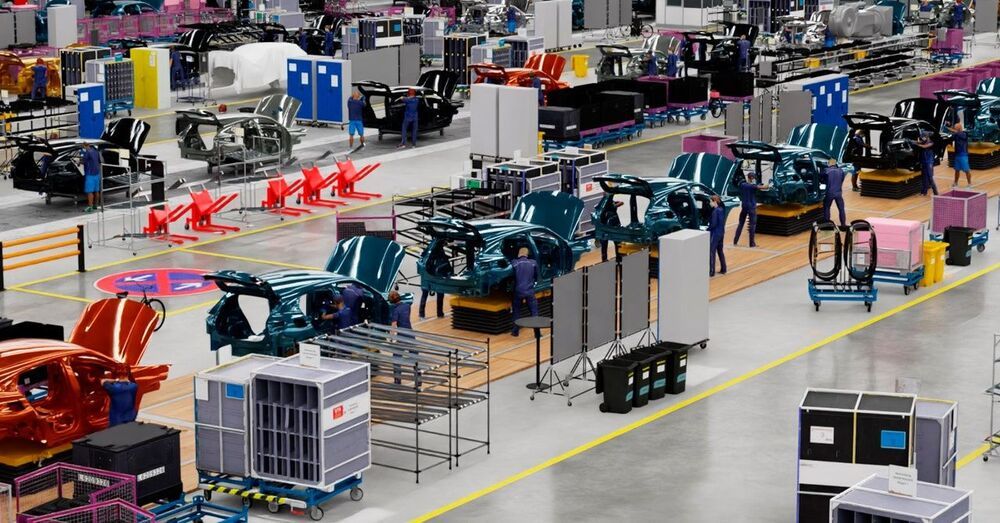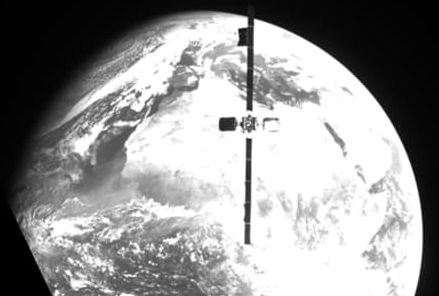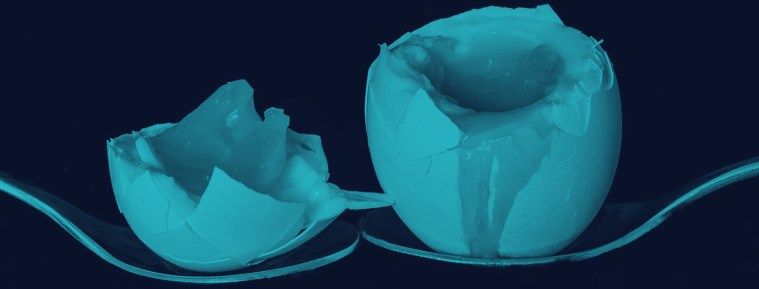These musical videos illuminate different dynamics at play within iconic celestial objects.
Hearing sound blended with space data is artistically enjoyable. It also teaches listeners about different relationships throughout the universe.


Aubrey de Grey’s talk during the South Summit that took place in Spain last October 2020. Aubrey explains why he thinks science and technology is close to bringing aging under complete medical control.
He also describes how along the process we will reach what he calls “Longevity Escape Velocity”. Once we reach it, we will be able to stay one step ahead of the curve of aging, and extend significantly, eventually indefinetely, human health and lifespan.
During the South Summit that took place in Spain last October 2020, gerontologist Aubrey de Grey explains why he thinks science and technology is close to bringing aging under complete medical control.
He also describes how along the process we will reach what he calls longevity escape velocity. Once we reach it, we will be able to stay one step ahead of the curve of aging, and extend significantly, eventually indefinetely, human health and lifespan.
El video cuenta con subtítulos en Español.

Two aerospace firms accomplished an industry first on Monday, as a small Northrop Grumman spacecraft docked successfully with an active Intelsat satellite to provide service and extend its life.
Intelsat’s IS-10–02 satellite is nearly 18 years old, and operating well past its expected lifespan, but the Northrop Grumman-built spacecraft called MEV-2 will add another five years of life to IS-10–02, essentially re-fueling the satellite and giving it a new engine for control.
The companies hit a milestone in the growing business of servicing satellites while in space.
Astronomers have painted their best picture yet of an RV Tauri variable, a rare type of stellar binary where two stars – one approaching the end of its life – orbit within a sprawling disk of dust. Their 130-year dataset spans the widest range of light yet collected for one of these systems, from radio to X-rays.
“There are only about 300 known RV Tauri variables in the Milky Way galaxy,” said Laura Vega, a recent doctoral recipient at Vanderbilt University in Nashville, Tennessee. “We focused our study on the second brightest, named U Monocerotis, which is now the first of these systems from which X-rays have been detected.”
A paper describing the findings, led by Vega, was published in The Astrophysical Journal.

In a new study published in Cell Stem Cell, a team led by USC Stem Cell scientist Michael Bonaguidi, Ph.D., demonstrates that neural stem cells—the stem cells of the nervous system—age rapidly.
“There is chronological aging, and there is biological aging, and they are not the same thing,” said Bonaguidi, an Assistant Professor of Stem Cell Biology and Regenerative Medicine, Gerontology and Biomedical Engineering at the Keck School of Medicine of USC. “We’re interested in the biological aging of neural stem cells, which are particularly vulnerable to the ravages of time. This has implications for the normal cognitive decline that most of us experience as we grow older, as well as for dementia, Alzheimer’s disease, epilepsy and brain injury.”
In the study, first author Albina Ibrayeva, a Ph.D. candidate in the Bonaguidi Lab in the Eli and Edythe Broad Center for Regenerative Medicine and Stem Cell Research at USC, joined her colleagues in looking at the brains of young, middle-aged and old mice.

Food is big business.
In the U.S., the weight-loss industry is worth $78 billion.
Meat is worth $218 billion.
Sugar processing is worth $11 billion.
Soybeans are worth $65 billion.
As a point of comparison, the U.S. cigarette industry is worth about $50 billion.
We are kidding ourselves if we think that corporate interests have no effect on nutrition research. For example, Coca-Cola spent “$132.8 million on scientific research and partnerships over a five-year period” from 2010 to 2015 as a part of a campaign to absolve sweetened beverages of contributing to America’s obesity epidemic. (And it worked.)
On April 10, 2021 NASA announced Ingenuity Mars Helicopter failed high-speed spin test causing reschedule of the first flight to no earlier than April 14. NASA explained that during a high-speed spin test of the rotors on Friday, the command sequence controlling the test ended early due to a “watchdog” timer expiration. This occurred as it was trying to transition the flight computer from ‘Pre-Flight’ to ‘Flight’ mode. The helicopter is safe and healthy and communicated its full telemetry set to Earth. The watchdog timer oversees the command sequence and alerts the system to any potential issues. It helps the system stay safe by not proceeding if an issue is observed and worked as planned. Ingenuity team is reviewing telemetry to diagnose and understand the issue. Following that, they will reschedule the full-speed test.
Credit: nasa.gov, NASA/JPL-Caltech, NASA/JPL-Caltech/ASU
Source for NASA’s Mars Helicopter Ingenuity page: https://mars.nasa.gov/technology/helicopter/
Source for Ingenuity first fly reschedule: https://mars.nasa.gov/technology/helicopter/status/291/mars-…-april-14/
#mars #helicopter #perseverance
What if a fugitive could be detected just by testing the air from the crime scene?
Researchers showed that it is sometimes possible to use “airDNA” to detect where an animal has been, and that could eventually mean human fugitives.
This video explains biomolecules and cellular pool.
Thank You For Watching.
Please Like And Subscribe to Our Channel: https://www.youtube.com/EasyPeasyLearning.
Like Our Facebook Page: https://www.facebook.com/learningeasypeasy/
Join Our Facebook Group: https://www.facebook.com/groups/460057834950033
Support Our Channel: https://www.patreon.com/supereasypeasy